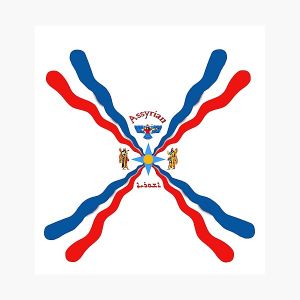Language/Assyrian-neo-aramaic/Vocabulary/Colors
Hi Assyrian Neo-Aramaic learners! 😊
In this lesson, we will be learning about colors in Assyrian Neo-Aramaic, which is essential to everyday conversations. We will provide cultural and interesting facts to help you remember and understand these words. Don't forget to practice with a native speaker on Polyglot Club and ask them any questions. Let's begin!
Basic Colors
In Assyrian Neo-Aramaic, the word for color is "rango," with the plural form being "rangye." Here are the most basic colors:
| Assyrian Neo-Aramaic | Pronunciation | English |
|---|---|---|
| ܣܝܥܝܐ (siya) | see-yah | Black |
| ܐܢܣܢܘܐ (ansno) | ahn-snoh | White |
| ܡܝܥܝܐ (miya) | mee-yah | Red |
| ܢܒܝܐ (nabya) | nah-byah | Blue |
| ܟܢܫܐ (kansha) | kan-shah | Green |
| ܪܛܘܢܐ (ratoona) | rah-too-nah | Orange |
| ܩܘܫܝܐ (qushiya) | koo-shyah | Purple |
| ܟܐܪܐܝܐ (ka'raya) | ka-rah-yah | Brown |
Fun Fact: Assyrians are known for their love of the color blue. Blue is used in traditional Assyrian clothing, as well as in architecture and art. It is said that the ancient Assyrian Empire used blue pigment to color the brick walls of their palaces and temples to represent heaven.
Additional Colors
Assyrian Neo-Aramaic also has some additional colors with interesting origins:
| Assyrian Neo-Aramaic | Pronunciation | English |
|---|---|---|
| ܬܒܪܐ (tabra) | tah-brah | Gray |
| ܝܢܘܐ (yono) | yoh-noh | Gold |
| ܚܝܐܐ ܕ ܦܘܡܛܐ (khia d'pumta) | khee-yah d'poom-tah | Silver |
Fun Fact: Assyrian Neo-Aramaic borrowed the word "yono" from Persian, which means "color of sun" and is used to describe the color gold due to its association with the sun's brilliance.
Dialogue
- Person 1: ܣܝܥܝܐ ܐܢܣܢܘܐ ܐܝܢܐ ܢܒܝܐ ܩܘܫܝܐ (Siya ansno ayana nabya qushiya) (Black, white, and purple are my favorite colors.) - Person 2: ܪܛܘܢܐ ܫܘܡܥܐ ܐܫܬܩܐ (Ratoona shumaa' a'shtqa) (Orange matches autumn.)
Conclusion
Congratulations! You have learned some of the most important colors in Assyrian Neo-Aramaic. Remember to practice with a native speaker on Polyglot Club and use these words in context to help reinforce your learning. If you want to improve your Vocabulary further, check out some of our other lessons on Assyrian Neo-Aramaic! 😊
➡ If you have any questions, please ask them in the comments section below.
➡ Feel free to edit this wiki page if you think it can be improved. 😎
Upon wrapping up this lesson, take a look at these related pages: Feelings and Emotions, Food, Education & Drinks.

